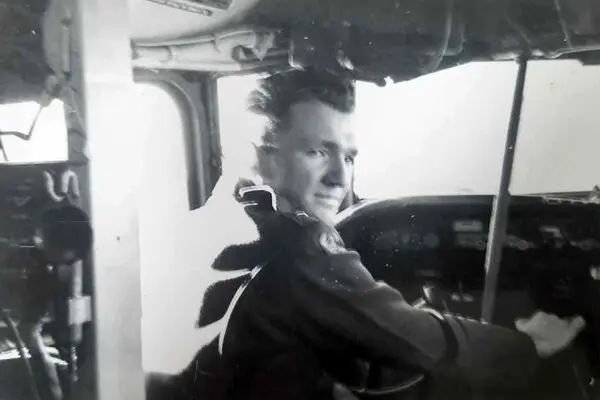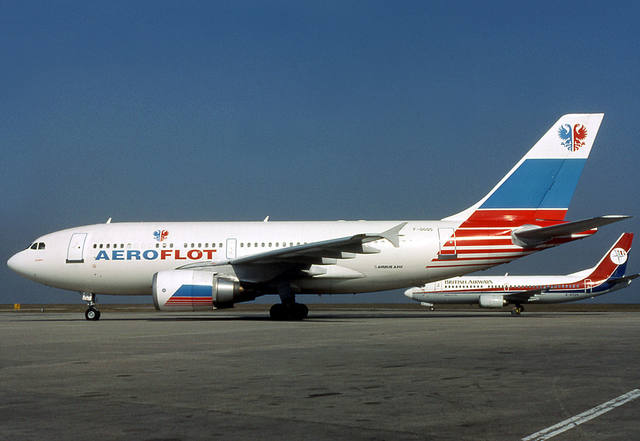One of the most haunting incidents in aviation history occurred on March 23, 1994, when Aeroflot Flight 593, en route from Moscow to Hong Kong, crashed into the Kuznetsk Alatau Mountain range in Russia. The crash claimed the lives of all 75 people on board, including passengers and crew, and left the world grappling with the shocking revelations that followed.
This tragic event was not caused by mechanical failure, terrorism, or adverse weather. Instead, it was the result of a tragic series of decisions that began with a moment of misplaced trust and ended in disaster.
The Context: A Routine Flight Turned Catastrophic

Aeroflot Flight 593 was operated by a seasoned crew. The captain, Andrey Viktorovich Danilov, had over 9,500 flight hours under his belt, while first officer Igor Vasilyevich Piskaryov and relief captain Yaroslav Vladimirovich Kudrinsky had 5,885 and 8,940 hours of experience, respectively. The Airbus A310 was cruising at an altitude of 33,000 feet, its autopilot system engaged, as it carried 63 passengers and 12 crew members toward Kai Tak Airport in Hong Kong.
Also on board were Captain Kudrinsky’s two children, a 13-year-old daughter and a 15-year-old son, traveling internationally for the first time with their father.
A Fatal Chain of Events Begins
As the aircraft soared over Siberia, most of the passengers were asleep, unaware of the tragedy that was about to unfold. At approximately 00:43, Kudrinsky invited his daughter into the cockpit. Sitting in her father’s seat, she manually adjusted the autopilot’s heading setting, simulating the sensation of flying the plane.
Minutes later, Kudrinsky allowed his 15-year-old son to take the same seat. While the autopilot remained engaged, the teenager manipulated the control stick for over 30 seconds, applying inputs of up to 10 kilograms. Initially, these actions appeared inconsequential. However, they inadvertently caused the autopilot system to disengage partially, leaving the aircraft’s control surfaces under manual operation without the crew’s realization.
The Moment of No Return
At 00:54, the autopilot’s efforts to counteract the boy’s control inputs created a conflict that resulted in the disconnection of the autopilot servo from the aileron control linkage. This subtle but critical change went unnoticed by the crew, as they were unfamiliar with the Airbus A310’s warning systems, having primarily flown Russian-built aircraft.
Without the autopilot maintaining stability, the plane began to bank steeply. By the time the crew recognized the issue, the aircraft was already in a dangerous position. Kudrinsky ordered his son to vacate the seat, but precious seconds were lost.
As the captain and co-pilot struggled to regain control, the aircraft had reached a 90-degree bank angle, rendering it nearly impossible to recover.
Desperate Attempts to Recover the Aircraft
In their efforts to stabilize the plane, the pilots managed to pull it out of a steep dive, only to overcorrect and send it into a vertical climb. This maneuver caused the aircraft to stall, leading to an uncontrollable spin.

The Airbus A310 began to lose altitude rapidly. By the time the crew regained partial control, it was too late—the plane had descended below the minimum safe altitude for the mountainous terrain of the Kuznetsk Alatau range.
At 00:58, just minutes after the initial sequence of events, Flight 593 crashed into the mountains at a speed estimated to be 160 mph. The impact destroyed the aircraft and claimed the lives of everyone on board.
The Aftermath: Investigations and Revelations
In the immediate aftermath of the crash, Aeroflot denied any fault on the part of the crew, citing possible mechanical failure as the cause. However, the publication of the cockpit voice recorder (CVR) transcript revealed the harrowing truth.
The recordings captured the crew’s conversations, the children’s interactions with the controls, and the chaotic attempts to recover the aircraft. This evidence left no doubt that the crash was a result of human error, stemming from a critical lapse in judgment by Captain Kudrinsky.
The Lessons Learned

The crash of Aeroflot Flight 593 sent shockwaves through the aviation industry, highlighting the importance of strict adherence to cockpit protocols. Key takeaways from the tragedy include:
- No Unauthorized Personnel in the Cockpit: This rule, now strictly enforced, ensures that only qualified crew members have access to the aircraft’s controls.
- Comprehensive Crew Training: Familiarity with all aircraft warning systems and protocols is essential for effective decision-making in emergencies.
- Safety Culture Over Personal Judgment: The incident underscored the dangers of deviating from established safety procedures, even for seemingly harmless actions.
The Human Cost of a Split-Second Decision
While aviation accidents are often the result of complex mechanical or environmental factors, the crash of Flight 593 was a stark reminder of the human element in flight safety. A moment of casual decision-making, intended to provide a thrilling experience for Captain Kudrinsky’s children, ended in unimaginable tragedy.
The victims included families, individuals on business trips, and crew members who had dedicated their lives to aviation. The loss left an indelible mark on their loved ones and the aviation community.
Changes in the Aviation Industry
In the years following the Flight 593 disaster, airlines worldwide implemented stricter cockpit access policies. The reinforced rule of “sterile cockpit”—prohibiting unnecessary conversations and distractions during critical phases of flight—became an industry standard.

Moreover, pilot training programs now emphasize the psychological and emotional aspects of decision-making, ensuring that even seasoned captains understand the gravity of every action taken during a flight.
A Sobering Reminder of Responsibility
The story of Aeroflot Flight 593 serves as a cautionary tale for the aviation industry and beyond. It is a reminder that safety is not just about advanced technology or extensive training—it is about unwavering vigilance and respect for established protocols.
Conclusion
The tragic loss of Aeroflot Flight 593 is a painful chapter in aviation history, marked by a combination of human error, misplaced trust, and devastating consequences. While no measures can undo the loss of 75 lives, the lessons learned from this disaster have contributed to a safer aviation environment for millions of travelers worldwide.
As we reflect on this tragedy, let it remind us of the immense responsibility borne by those in positions of trust and the importance of adhering to safety measures designed to protect lives.


